Repost: the deadlift.
 the deadlift is a powerlifting movement, more known as a compound exercise which involves more than one muscle.
the deadlift is a powerlifting movement, more known as a compound exercise which involves more than one muscle.

It requires the lifter to lift the stationary weight from the ground till the body is fully extended. The start position requires the lifter to be bent over and stabilized before any force can be applied to get the weight off the ground.
the muscles used in the deadlift are the erectors spinae (lower back), the glutes, hamstrings, quads, traps, shoulder blade stabilising muscles. so actually it's quite a good test of strength as it involves only one movement of bringing up the weight.
The key coaching points include:
1. at the start of the movement,
- Back needs to be neutral.
- Chest up, looking forward.
- Feet shoulder width apart.
- Shoulders above/slightly front of the bar.
2. the movement itself,
- Drive through the heels.
- Bring ur chest up.
- Push against ur thighs.
- Knees and hip extend together.
- Keep ur shoulder blades together.
- Try not to round ur back (i'll explain why).
Well.. these are the coaching points when you are doing the movement.
There are several ways of gripping the bar. You could grip the bar with both palms facing you (pronated grip), or a mixed grip with one palm facing out and the other facing in.

There is also the hook grip which Olympic lifiters use where the thumbs are kept inside and they grip the thumb to create a hook effect. This actually increases ur grip strength but it requires alot of getting used to as it hurts your thumbs quite abit at the beginning.

As for variations of the movement, there are quite a few. For beginners, it would be better to start by using dumbbells by the side as a barbell requires to be in front of u and as a beginner you may not be used to having a barbell scrape your shins and thighs. Plus, it allows for you to follow the proper mechanics of the deadlift movement.
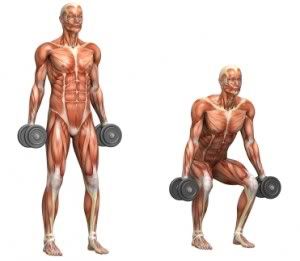
Another good option is to use a kettlebell or a dumbbell between your legs. This allows for proper technique to be adopted.. The neutral back, driving through ur heels and hips.
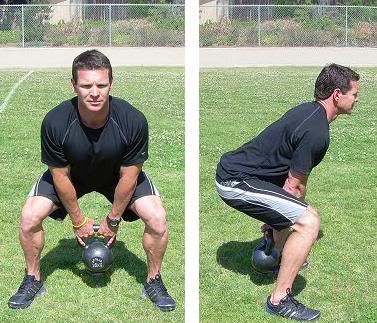
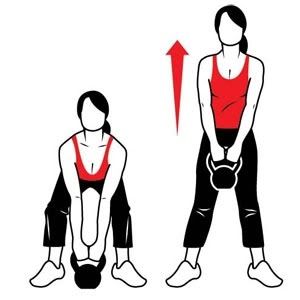
Another way would be using a trap bar which actually is a bar that goes around you so you end up holding the bar as though you are holding dumbbells by the side.
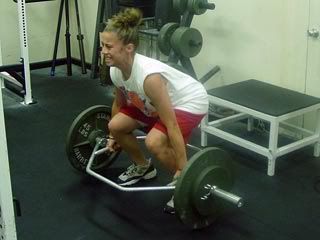
Other variations include the sumo deadlift where your feet stance is further apart which creates more inner-thigh and glute involvement.
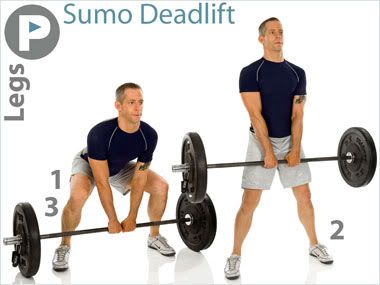
Rack deadlifts, where the movement involves lifting the weight from the knees on a rack to a standing position involves more lower back and reduces the hamstrings and quads.
To involve the hamstrings, you could perform romanian deadlift or also known as thestiff-legged deadlift where your legs are kept straight during the movement. This would involve more of your hamstrings and glutes but puts more pressure on your lower back so the amount of weight to be used will be lower.
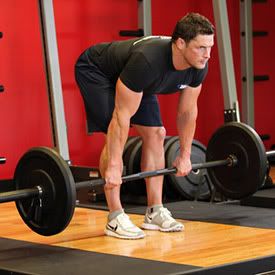
There is also the rounded-back method which some powerlifters advocate. Well most trainers would advise not to round your back DURING the movement as it would increase the intervertebral pressure which could result in a slip disc. But for those who advocate the rounded-back method (which is endorsed by the Finnish powerlifters), they actually keep their back rounded through the movement. This is proven by the raw deadlift world record at 426kg by Konstantin Konstantinovs who claimed that without a rounded back he could not have lifted above 300kg. But before you try this method, please train for it by doing alot of lifts keeping a rounded back throughout the lift from the start.
[youtube=http://www.youtube.com/watch?v=wh-ikyBAQr8&hl=en_US&fs=1&]
As for adding the deadlift to your program, it would be good to have it at the start so that you are fresh and strong. This allows for proper technique to be practised and not be affected by fatigue. You could insert them into your back workouts or work on them as an individual workout and include back exercises (e.g. bent-over rows, good-mornings, back extensions) to supplement your deadlift training. You could also start by doing a 5x5 program where you aim to complete 5 sets of 5 reps of the deadlift at a certain weight before you increase the weight. and i would highly recommend using them as more of a strength exercise than an endurance exercise as there are better isolation exercises for your lower back.
So that's the rough details of the deadlift. if you have any questions, kindly drop a comment and i will be more than willing to provide more information that you require and if i do not have the answer, i will make sure i find it out for u! enjoy!